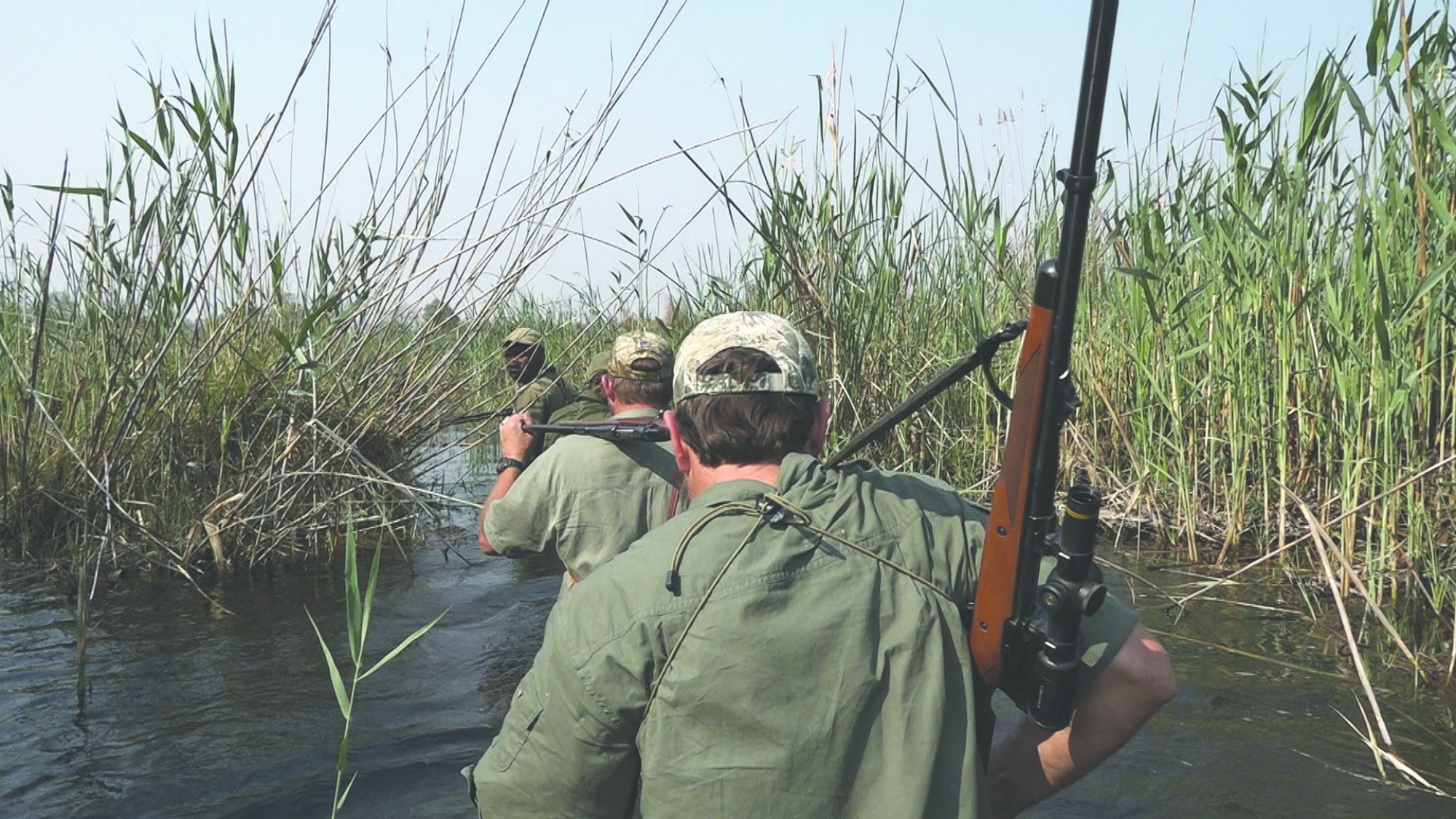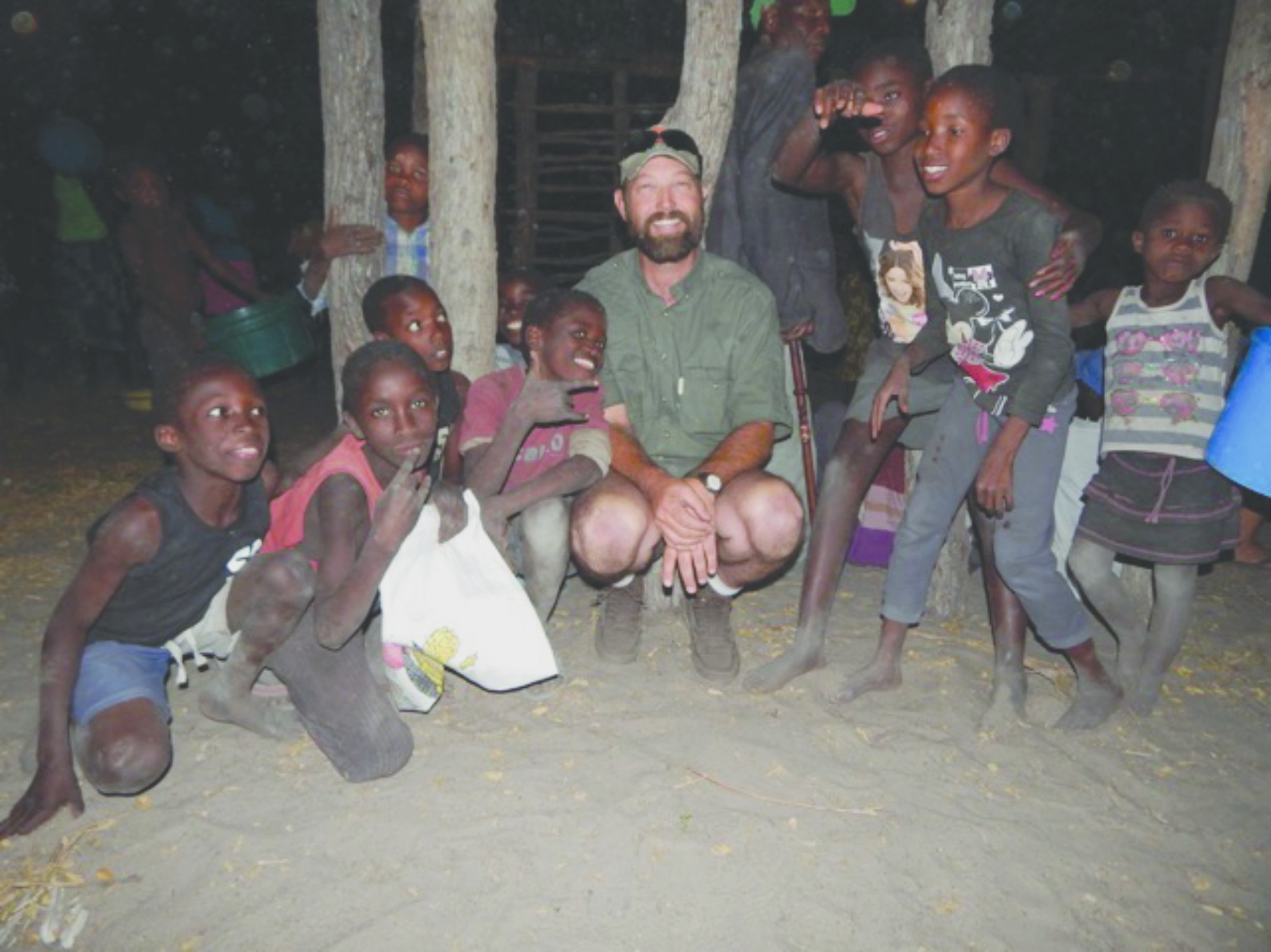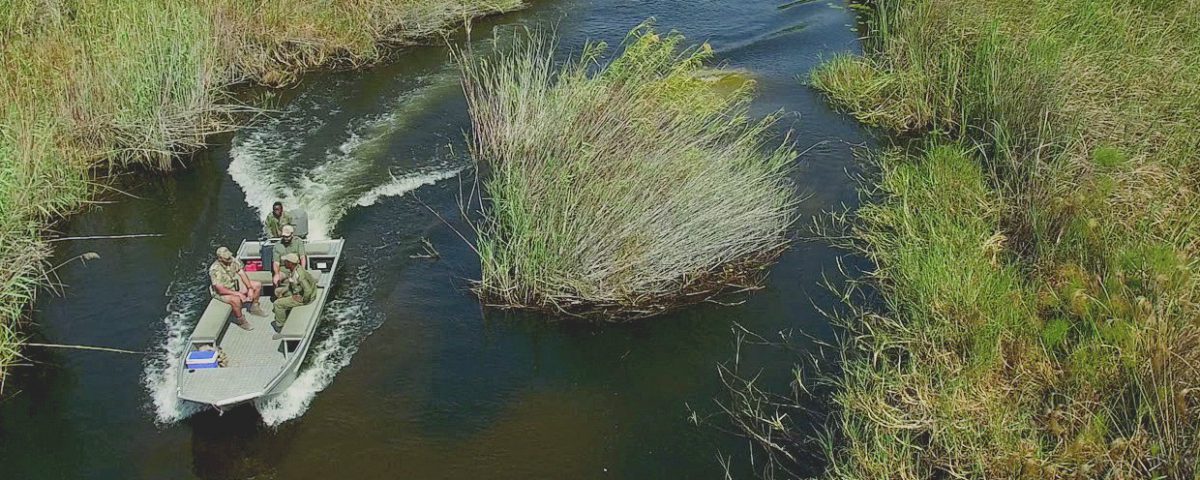
King of the mountains
August 17, 2017
With aching legs on hot stones
August 21, 2017
T he best thing about Namibia is the great people you meet. It has been amazing to get to know so many people from so many different walks of life, something I count as a blessing in my life. From the sheep farmers in the south to the many wonderful people in the hunting fraternity – I have always felt like family there. Namibia is one of the very few places in the world where I truly feel at home. Gysbert and Danene van der Westhuyzen, with whom I have hunted before, showed me what was available for my safari. The conservancies in Caprivi have very tight quotas. Namibia is to be commended for how well the protection and preservation of wildlife and wild places is organized. Having said that, it takes some deliberation to acquire the quota which means a safari like this is best planned out at least a year or more in advance.
I intended to hunt elephant and buffalo on this safari. My plans were made and it was, at that point, all about waiting – and dreaming of the Caprivi, of course. As we got off the plane in Katima Mulilo the humidity and the bugs met us in full force to remind me that I was really in Africa again, but certainly somewhere quite unfamiliar. My first impression of this part of Namibia included the traditional mud and thatch huts in villages and, of course, all the large trees. It was a drive of about two hours and then a short boat ride to the camp. Taking a boat for the last stretch down the river was a treat and made the beginning of my safari a real adventure. I have to admit, however, that the thought of crocodiles and hippos in such close proximity to the boat was a bit daunting as we travelled in the setting sun.
Day one had arrived and as we set out for a long day of walking I was really in awe of the scenery. From the reeds by the rivers and in the low places to the large trees that dominated the landscape, this place was beautiful and certainly very unlike the other parts of Namibia I was so familiar with. Later that day I stepped awkwardly into an elephant track which was two foot deep but it did not feel too bad until later that evening. We got caught out after dark and we were walking back to camp through an area where a trail camera had shown a lioness earlier that day. Needless to say, we were at a forced march pace and everyone was staying close together. I had the only flashlight and was trying to light up the path while checking the tall grass nearby for those yellow eyes that we all feared. I was afraid that all I was doing was to disturb my trackers’ vision since they never use a torch. Hurrying along I noticed my calf muscle tightening up, but thought nothing of it. In the days to come it would become painfully apparent that the elephant track had done some serious damage. My right ankle and calf were injured and very painful. We were walking 10-12 miles each day hunting buffalo and the pain was getting worse.
Day two was tough. I pessimistically knew it would not get better for quite some time and that I would just have to deal with it. So goes a safari with its unexpected twists and turns and pains!
There were only a few roads in the areas where we were trying to hunt. At times we were able to use the boat to get us closer but for the most part it was all on foot. After many miles and several days we finally spotted some buffalo bulls.
A nice group of “dagga boys”, for sure, but it was getting late. In the Caprivi with all the rivers, the buffalo are usually covered in mud, or dagga, as the locals call it. On this safari I certainly experienced first-hand where the term “dagga boys” comes from. For some time all of us silently studied the buffalo through the thick bushes with our binoculars. There were definitely some nice bulls in this group. They were especially nice to my naive eye for buffalo. As the sun was setting we began to realize that there was just not time enough to get into a position to even try a stalk on this bachelor herd. A bit disappointed, we made the long trek back to camp. Going into this hunt I knew that buffalo move in and out of the parks all the time, crossing the many rivers. Nevertheless it was a bit tough to not see any buffalo for several days. Still, I had ten days in this wonderful place and I was going to enjoy every minute of it even if I was hobbling along with a strained calf and not finding that bull.
“ He led the way in a circle in order to get downwind. As we cautiously walked to a better position and our eyes became accustomed to the scene, the herd kept growing. They were certainly in their hundreds. “
The following day finally proved that those buffalo bulls move around amazingly far and wide. As with most days we left the camp very early on foot. Gysbert, his tracker Cassius, game scout Joseph and my camera “man” Janine headed out for another day in the bush. e trail held some real excitement as we were unintentionally following a leopard female and cub. The tracks were very fresh and I wondered if we needed to proceed with caution. No one else was worried and we kept up our usual fast pace. Gysbert was the first to spot what seemed to be quite a few buffalo. He led the way in a circle in order to get downwind. As we cautiously walked to a better position and our eyes became accustomed to the scene, the herd kept growing. ey were certainly in their hundreds.
The Caprivi was very dry at that time and the water in the pans and floodplains had evaporated. For a better view of the herd we sneaked to a spot which is usually an island. Without wasting much time my PH put up the sticks and pointed out the best bull. The herd was grazing and steadily moved to our right. I quickly adjusted my scope, much to my PH’s silent displeasure, and readied my .416 Ruger. As the big bull was slowly moving, I put one right behind his right shoulder. The bull lunged forward, typical of a good shot, and ran toward cover. We both fired as the bull was nearing the brush line and then wisely decided to wait a while. The follow-up shots had also made contact on the departing bull. As the herd ran and gathered up we realized just how many buffalo there were. The sound can only be described like that of a loud freight train as they thundered away over the plains through some small streams.

When the dust had settled we agreed that there must have been four hundred buffalo in that herd. Their stampede had given me goose bumps. I was just getting over it when we heard the tell-tale death bellow. I can only say, hearing that bellow for the first time really was an unforgettable moment. It is a moment that marks a milestone in one’s hunting career. Although we had very good trackers, they would not be needed because the bull was easily found less than 100 yards away.
The recovery of a big buffalo bull in a remote location is never that easy. We had to get a vehicle fairly close, which took hours. We walked all the way back to camp, took one of the boats across and down the river to the vehicle, then drove through another conservancy and back to the buffalo. We left one of the trackers with the bull and he wisely chose a place to sit far away from the scene, since we had seen fresh lion tracks nearby. Back near the camp the slaughtering began in order to take the meat to the villagers.
One of the funniest sights I have seen in my lifetime of hunting unfolded when the skinners began to work on the big bull that had been in the sun for several hours. One of them cut a bit too deeply, into the bloated rumen, releasing a gas explosion that blew his cap off! We all had a good laugh over his misfortune. As evening came we headed for one of the conservancy buildings for the meat to be evenly distributed to the local villagers.
So many of them thanked us and I took pictures with them and the children. What a wonderful ending to an unforgettable buffalo hunt.
As I reflected on this buffalo hunt, I realized it was truly more than I had dreamed of. From fear and injury at the beginning of the hunt to complete awe as we marvelled at nature and God’s creation. I can honestly say that this is what safari is all about. As anyone who has been fortunate to have been to Africa can tell you, as soon as the hunt is over the planning for the next adventure begins. As for me, as long as I live, I will never stop dreaming of Namibia.
“ From fear and injury at the beginning of the hunt to complete awe as we marvelled at nature and God’s creation. I can honestly say that this is what safari is all about. “
This article was first published in the HuntiNamibia 2017 issue.


